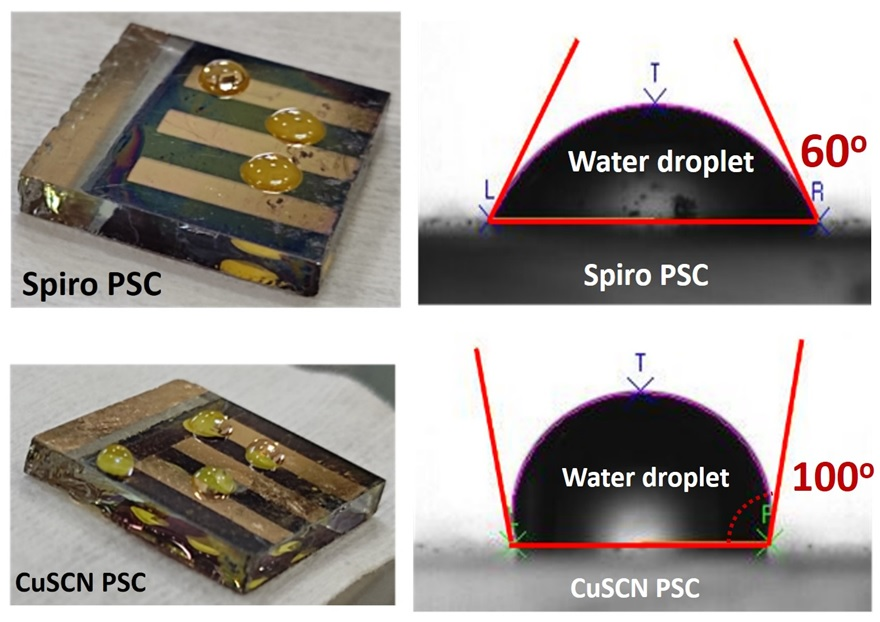Perovskite solar cells (PSCs) with increased stability have been fabricated with the help of the inorganic hole transporting material copper thiocyanate (CuSCN). The chemical has proved to be a cost-effective and industry viable alternative to Spiro hole transporting material (HTM) for stable PSCs.
Metal halide perovskite solar cells (PSCs) have caught the attention of the photovoltaic research community for their high power conversion efficiencies (PCEs), surpassing thin film and multi-crystalline silicon solar cells. However, the critical issue of their stability under atmospheric conditions needs to be addressed before outdoor deployment.
Typically, PSCs use hygroscopic dopants to p-dope the Spiro hole transporting material (HTM), which is suitable due to its favourable energy level and solution processability. Unfortunately, this leads to moisture ingress into the device, degrading the perovskite absorber and solar cell performance.
Scientists at the International Advanced Research Centre for Powder Metallurgy and New Materials, an autonomous institute of DST, have developed copper thiocyanate (CuSCN) as a dopant-free and robust HTM for PSCs. Their studies have shown that inorganic CuSCN, with a large band-gap of 3.9 eV, minimum valence band offset, and high hole mobility, can be a cost-effective and industry viable alternative HTM for stable PSCs.
The researchers fabricated PSCs in an FTO/TiO2/MAPbI3/HTM/Au configuration using CuSCN as HTM and benchmarked the device with a spiro-based PSC. The CuSCN-based PSC showed a power conversion efficiency of 10.1%, comparable to that of the 10 % efficient spiro-based PSC prepared under similar conditions. It also increased the moisture stability of the PSCs.
The droplets flattened on the spiro-based PSC, attributed to dopants increasing the polarity of the material, making it more wettable and easier for moisture to penetrate the device and degrade it faster. On the contrary, water droplets on CuSCN surface exhibited relatively high contact angle of 100° and this may be attributed to non-polar surfaces resulting from spin coating of CuSCN dissolved diethyl sulfide precurosr. X-ray diffraction studies carried out on fresh and aged CuSCN-based PSCs showed the majority of MAPbI3 phase remains intact.
This work showcased the superior dual-functional property of CuSCN, both as an HTM and a robust barrier layer for PSCs, paving the way for the development of large-area and stable PSCs.
Publication link: DOI: 10.1039/d1ma00861g
For further information, please contact Dr Easwaramoorthi, easwar[at]arci[dot]res[dot]in

Figure 1. Photograph and contact angle of water droplets on Spiro and CuSCN HTM based Perovskite Solar Cells

Figure 2. Stability of Spiro and CuSCN HTM based Perovskite Solar Cells.






























